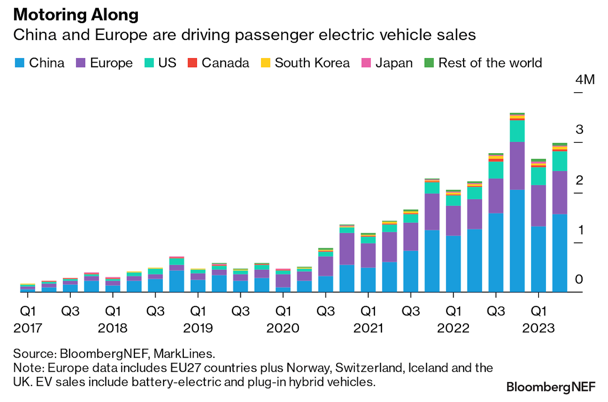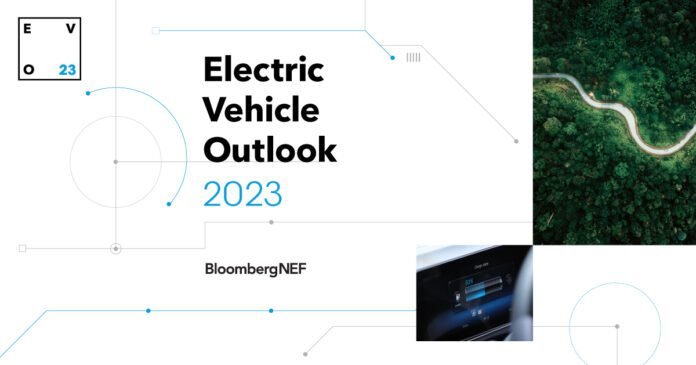According to recent research from BloombergNEF, there will be more than 100 million passenger EVs on the road worldwide by 2026 and more than 700 million by 2040. Sales of internal combustion vehicles are currently falling after reaching a record in 2017. The daily oil demand being replaced by EVs is presently 1.5 million barrels, and the peak oil demand for road transport will occur in 2027.
All of this may sound like good news, but the report warns that without greater global legislation on the part of countries, such figures may not be sufficient to meet the global emissions objectives. Two scenarios are taken into account in BloombergNEF’s 2023 Long-Term Electric Vehicle Outlook, one of which assumes no further regulations are put in place and the other of which would be consistent with the world having net-zero emissions by 2050.
The difference between the two scenarios, according to BloombergNEF, “is smaller than in any of our previous projections.”
What is BloombergNEF?
BloombergNEF (BNEF) is a strategic analysis provider spanning the international markets for commodities and the disruptive gadgets driving the shift to a low-carbon economy. Their in-depth analysis evaluates how the power, transportation, business, construction, and agricultural sectors can adjust to the energy shift.

According to BNEF, in the first scenario, cumulative EV sales will total $8.8 trillion by 2030 and $57 trillion by 2050, but less than half of all passenger vehicles will be on the road globally by 2040. In the latter, the research shows that neither passenger car nor commercial vehicle sales are currently on course to achieve the challenging net-zero goal by the middle of the century.
According to Aleksandra O’Donovan, head of electric vehicles at BloombergNEF, “direct electrification via batteries is the most efficient, cost-effective, and commercially available route to fully decarbonizing road transport.” “However, a stronger push is required in areas like heavy trucking, the infrastructure for charging, and the supply of raw materials.”
In particular for vans, lorries, and other commercial vehicles—which now account for 30% of road transport emissions—the BNEF analysis suggests higher CO2 emissions regulations. Additional policy recommendations include financing for EV battery recycling and research, public charging networks, and, for governments with 2050 net-zero targets, the gradual phase-out of new internal combustion vehicle sales by 2035 at the latest.
Without such modifications, BloombergNEF still predicts a sizable global market opportunity for EVs, notably in China, which it projects will hold 31% of a $56.7 trillion market by 2050. But according to the research, further policies may increase the market’s overall worth to above $88 trillion.


